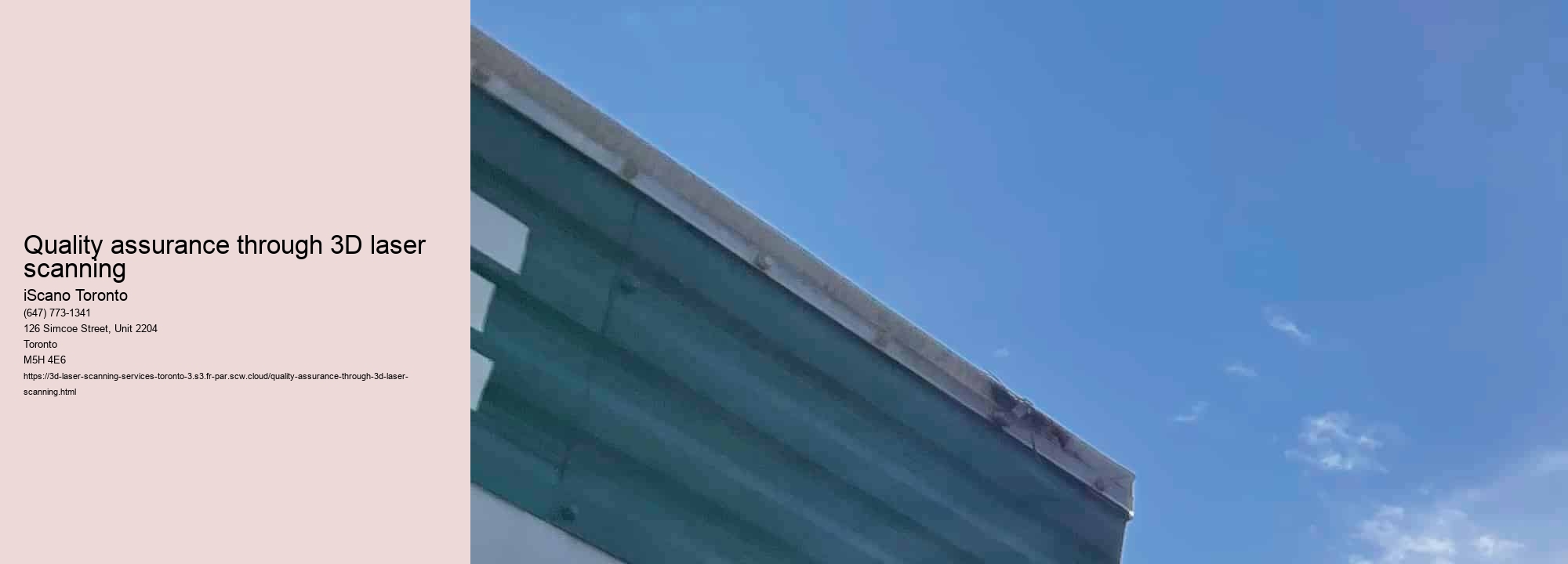Navigating the Future: Exactly How 3D Laser Scanning Services Are Changing Industries
Quality assurance through 3D laser scanning .Introduction
In the world of technological improvement, couple of technologies have been as transformative as 3D laser scanning services. These cutting-edge tools have changed sectors by offering unmatched accuracy, efficiency, and flexibility. From architecture to archaeology, from producing to medication, the applications of 3D laser scanning are substantial and continuously expanding. In this short article, we delve into the intricacies of this technology and check out exactly how it is improving the landscape of different industries.
Recognizing 3D Laser Scanning
At its core, 3D laser scanning is a non-contact, non-destructive modern technology that captures the form, dimension, and information of objects or settings by releasing laser beams. These beams bounce off the surface areas they experience, and the scanner determines the time it considers each beam of light to return, thus developing a factor cloud—-- a collection of millions of information points that represent the things'' s geometry in 3 measurements.
The Advantages of 3D Laser Scanning
One of the primary advantages of 3D laser scanning is its unmatched precision. Standard approaches of dimension commonly drop short in catching intricate geometries or intricate details, resulting in errors and inadequacies. With 3D laser scanning, nevertheless, also one of the most intricate surface areas can be caught with precision to the millimeter, guaranteeing that every detail is made up.
Furthermore, 3D laser scanning is incredibly efficient. Unlike typical checking techniques that can be taxing and labor-intensive, laser scanning enables rapid information purchase. A solitary scan can catch countless data points in a matter of mins, significantly lowering the moment and sources required for information collection.
One more considerable benefit of 3D laser scanning is its non-destructive nature. Unlike physical dimensions or intrusive evaluation approaches, laser scanning does not require straight call with the object being scanned, protecting its integrity and reducing the threat of damages.
Applications Across Industries
The adaptability of 3D laser scanning has brought about its prevalent fostering throughout a myriad of sectors. In style and building and construction, as an example, laser scanning is made use of for as-built paperwork, clash discovery, and constructing information modeling (BIM). By precisely recording status quo, architects and designers can enhance the style process, reduce mistakes, and lower expensive rework.
In the manufacturing market, 3D laser scanning plays a vital function in quality control, reverse engineering, and rapid prototyping. By precisely capturing the dimensions of components and products, manufacturers can determine flaws, optimize production processes, and bring items to market quicker.
The impact of 3D laser scanning extends beyond the realm of market and into areas such as archaeology, forensics, and healthcare. Archaeologists utilize laser scanning to produce in-depth 3D designs of historical sites and artefacts, allowing for digital conservation and analysis. In forensics, laser scanning is made use of to record criminal activity scenes, collect proof, and reconstruct crashes with unequaled precision. In medical care, 3D laser scanning enables personalized prosthetics, orthotics, and implants customized to the unique makeup of each person.
Future Patterns and Technologies
As modern technology remains to advancement, the future of 3D laser scanning holds enormous assurance. One emerging pattern is the integration of artificial intelligence (AI) and artificial intelligence formulas into scanning software, allowing automated feature recognition, data analysis, and modeling. This assimilation not only improves the speed and accuracy of scanning processes yet additionally opens up new possibilities for data-driven understandings and decision-making.
In addition, advancements in hardware, such as the advancement of handheld and mobile scanning devices, are making 3D laser scanning extra accessible and portable than ever before. These compact and lightweight scanners empower customers to capture information in remote or tough environments, even more broadening the reach of this transformative innovation.
Conclusion
In conclusion, 3D laser scanning services are reinventing industries around the world, supplying unequaled accuracy, performance, and convenience. From architecture to archaeology, from making to medication, the applications of 3D laser scanning are endless. As innovation remains to develop, the future holds even better guarantee, with developments such as AI combination and portable scanning devices poised to more expand the capabilities of this transformative technology. In navigating the future, 3D laser scanning will most certainly remain to go to the forefront of advancement, improving sectors and driving development in the years to come.
